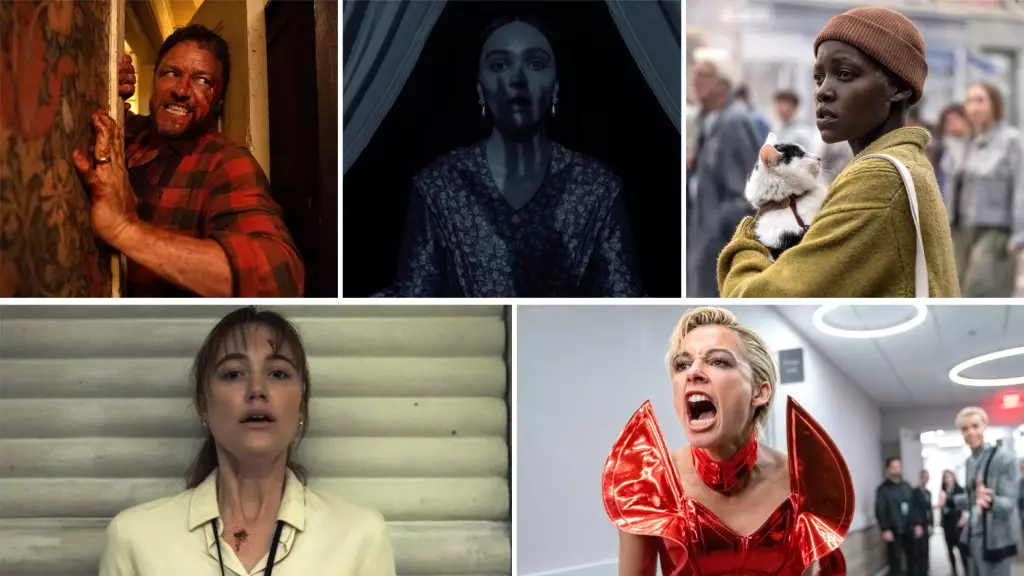In recent years, the landscape of the film industry has shifted dramatically. The age-old notion that box office earnings were the be-all and end-all of a film’s success is becoming increasingly antiquated. The 2024 edition of Deadline’s Most Valuable Blockbuster tournament underscores this transition, as it emphasizes that a film’s impact extends far beyond its initial box office haul. Major studios like Disney, Warner Bros, and Universal are leaning into secondary revenue streams—streaming deals, home rentals, and merchandise—to stay profitable in a competitive market. On the other hand, new players like Amazon and Apple, known for their streaming prowess, are redefining game metrics by assessing films’ success based on a secretive blend of theatrical performance and post-release streaming numbers. Excluding these tech giants from the current analysis might raise eyebrows, but it highlights a crucial point: the conversation about cinematic value is evolving.
A Quiet Place: Day One Triumphs
Leading the charge in profitability is Paramount’s “A Quiet Place: Day One,” which raked in an impressive $83.6 million in net profit. The franchise’s allure is undeniable, driving audiences back to theaters for its latest installment. Directed by Michael Sarnoski, who took the reins from creator John Krasinski due to scheduling conflicts, the film artfully introduced fresh faces such as Lupita Nyong’o and Joseph Quinn to a beloved series. Notably, the movie marked a historic moment by posting the highest opening weekend of any film in the franchise despite the absence of its original cast, showcasing the strength of the brand Paramount has meticulously cultivated.
More than just a horror film, “A Quiet Place: Day One” advanced the narrative of the original while managing to draw in a substantial audience. This success is a testament to the potential of well-executed prequels as a strategy in franchise filmmaking. As studios look to maximize profitability, this film serves as an instructive case study on leveraging a successful cinematic universe.
Nosferatu: Rethinking Horror
Next up on the podium is Focus Features’ “Nosferatu,” an unexpected gem that made waves with a net profit of $70 million. In a landscape often dominated by blockbuster franchises, a period horror film seemed a risky endeavor, yet director Robert Eggers pulled it off with finesse. By offering a contemporary yet respectfully antiquated retelling of Dracula, Eggers attracted both horror enthusiasts and awards season fans alike. The marketing strategy, which cleverly hinted at the film’s intrigue without revealing too much, culminated in a staggering 65 million views for its trailer. This indicated not only the film’s anticipated success but also how effective targeted marketing can be, particularly in niche genres.
What’s fascinating about “Nosferatu” is its ability to tread the fine line between arthouse and mainstream cinema. By reviving a historical figure within a modern context, Eggers not only brought back nostalgia but showcased how horror can serve as an artistic medium worth exploring. Focus Features did extraordinarily well to identify and capitalize on this market gap.
Smile 2: A Horror Sequel Done Right
Following closely is “Smile 2,” another franchise installment from Paramount that grossed $55.4 million in profit. The marketing for “Smile 2” was particularly ingenious, leveraging the popularity of its predecessor to create buzz. Not content to rest on laurels, the creative team utilized a multifaceted campaign that blurred the lines between film promotion and reality, allowing audiences to deeply immerse themselves in the story even before the film was released.
The decision to keep Parker Finn as both writer and director ensured a continuity in vision that often eludes sequels. The fresh narrative lens—centered on a haunted pop star—added layers of complexity and engagement. Importantly, the film embraced the nuanced storytelling of mental health through its supernatural lens, demonstrating a significant shift in the horror genre’s focus.
Speak No Evil: Blumhouse’s Resilient Formula
Blumhouse Productions continues to showcase its prowess with “Speak No Evil,” which surprisingly garnered a net profit of $50 million despite its modest box office debut. Blumhouse’s model, emphasizing low production costs, allowed this film to be financially viable despite its initial constraints. The strategic decision to remake the 2022 Danish-Dutch film took risks, but the fresh twist aiming for a happier ending offered a unique selling proposition. It illustrated how fresh storytelling could thrive amidst a sea of remakes.
Even with an opening that fell short of expectations, the film’s quality and timing allowed it to build momentum that ultimately resonated with audiences looking for something other than typical horror fare, showcasing Blumhouse’s knack for counterprogramming.
Longlegs: Innovating Audience Engagement
Lastly, Neon’s “Longlegs,” with a net profit of $48 million, pushed the boundaries of unconventional marketing. The film, centered on a dark serial killer narrative, struck a chord with horror aficionados thanks to its avant-garde approach. The decision to keep appearances by lead actor Nicolas Cage under wraps until the film’s release created a buzz that few films can achieve, exemplifying how powerful intrigue can be.
Neon’s ability to draw a significant audience with a low P&A spend reinforces the notion that strategic marketing can drastically affect a film’s reception. It also emphasizes that originality, in concept and execution, can create profitable entries within the rapidly evolving cinematic landscape.
In an industry that continues to navigate new challenges, these films exemplify an anything-but-generic path toward profitability. As traditional avenues change, those willing to innovate and adapt will ultimately define the future of cinema.
